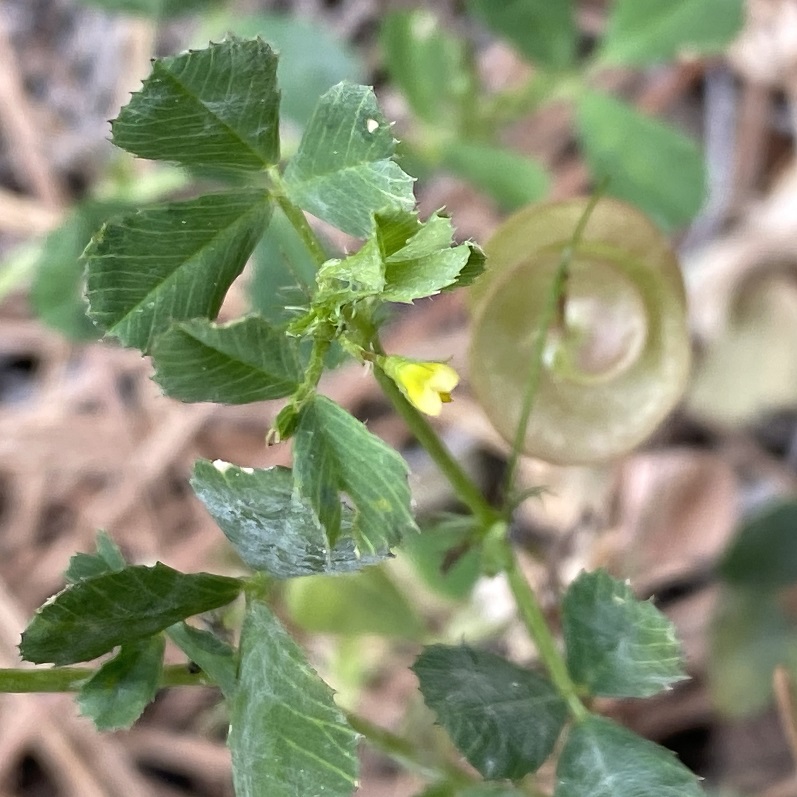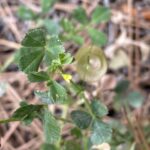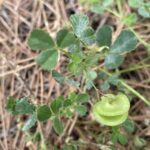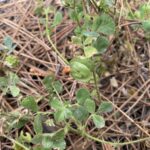Μηδική η φέρουσα σφαιροειδής μύες
Etymology of Medicago orbicularis: The term "Medicago" derives from "Μήδια" [Media], a historical geographic area occupied by the Medi that occupied a large part of today’s central and western Iran south of the Caspian Sea, the territory from which the ancient Greeks thought the plant originated; from this derived the Ancient Greek word for plant "μηδική" [medice], meaning "of Media". Latin "orbicularis" means "bearing orbicular muscles", which is a reference to its pod coils.
There are at least 24 species and one hybrid in the wild Cypriot habitat (plus another domesticated one), of which one species appears exclusively in the occupied north. Another one's existence is questionable.
Medicago orbicularis is a plant that exists all around Cyprus and appears up to an altitude of 1150 metres. Its flowering period is between February and May.
How to identify Medicago orbicularis:
Medicago orbicularis is an annual, with stems 10-45 cm, glabrous to subglabrous. Leaflets 7-18 mm long, obovate to cuneate, mostly retuse, dentate; the stipules are laciniate. The inflorescence is in a 1-5-flowered peduncled raceme, the peduncle is longer than the petiole. The calyx is circa 3.5 mm long, with teeth almost equal to the tube. The corolla is about twice the calyx, yellow. The fruit is discoid, with 3-7 coils, 4-5 mm broad, glabrous.
M. orbicularis has a similar fruit to blancheana and bonarotiana. Their main difference is that orbicularis has a rather flat, discoid fruit, 12-16 mm in diameter, whilst the other two have some pod coils that are conspicuously imbricate (as in a stack of bowls - not rather flat). Additionally, the first one has a glabrous pod, and the other two have a pod with a slight pubescence.






